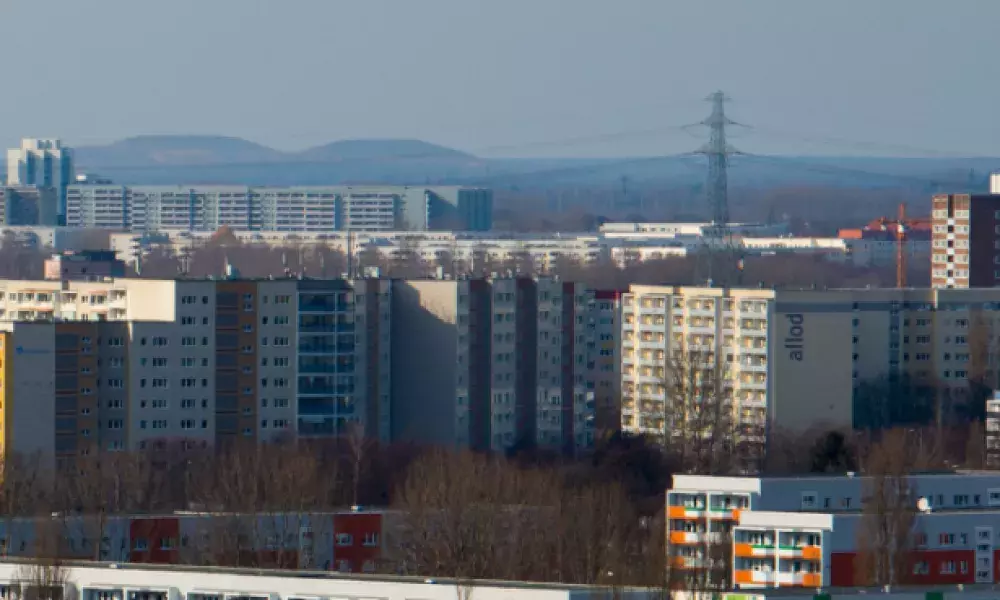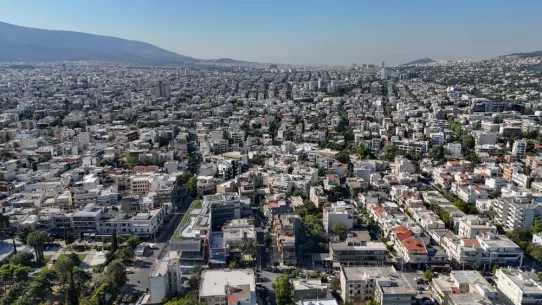Handbook of SUD strategies Chapter 2 - Territorial Focus

Introduction
Today, urban areas across the European Union (EU) face a wide range of different challenges, including affordable housing, migrants’ inclusion, social segregation, environmental footprint, traffic congestion, climate change, ageing, urban health. At the same time, they present opportunities for development, including diversity, creativity and innovation (Vandecasteele et al., 2019). What seems particularly relevant for integrated and place-based approaches is not only that these challenges and opportunities occur in urban contexts but also that each one has a specific spatial dimension.
Sustainable Urban Development (SUD) strategies supported by EU cohesion policy are designed to target specific areas, with a distinct territorial focus. Having an explicit territorial focus means that needs, challenges and opportunities for development must match the appropriate spatial scale and territorial context. Choosing the appropriate area to implement the strategy is not only a methodological decision, but also a policy decision, which can depend on policy agendas and available governance tools. Moreover, the appropriate spatial dimension also has strategic value and can be a means of adopting an integrated approach to policy-making.
To better understand the spatial dimension of SUD strategies across the EU, it is first important to clarify what kind of urban areas are targeted. Both current and future regulatory frameworks are open to supporting urban areas of any kind, acknowledging the importance of cities of various sizes and of different types of agglomerations encompassing multiple municipalities. This is in line with the growing mismatch between administrative boundaries, urban structures and citizens’ behaviour. Putting it differently, in the EU there is a clear spatial mismatch between where people live and where job opportunities and services are located, leading people to carry on their daily activities across the administrative boundaries of different municipalities. Due to this increased interdependency, functional urban areas have become an ever more important category for policy-makers.
Looking at the Guidance for Member States (European Commission, 2015a) related to European Structural and Investment Funds (ESIF) 2014-2020, and at the way strategies are currently implemented on the ground, it is possible to see that SUD strategies can have a narrower or wider spatial focus. More specifically, it is possible to group the various approaches into three focus areas:
- area within city/town (districts/neighbourhoods), that is to say one or more specific districts or localities within an administrative area;
- cities, towns or suburbs, that is to say an individual municipality with no restrictions regarding its population size or density;
- functional area or multiple municipalities, that is to say two or more municipalities that are combined for the sake of the strategy. This category encompasses functional urban areas, metropolitan areas, twin cities and city networks.
Learning from data
Analysis of the strategies implemented during the 2014-2020 programming period shows that the majority of SUD strategies focus on cities, towns or suburbs (45%), followed by districts/neighbourhoods (31%), functional areas (20%), a network of cities (4%), and a portion of territory with specific features such as a park, an archaeological zone, or an island (0.4%).
All the aforementioned focus areas pose special challenges to policymakers in the design and implementation process, some of which are particularly difficult and recurrent. In particular, this building block will focus on the following challenges:
- targeting neighbourhoods
- the functional area approach
- urban-rural linkages.
The first methodological challenge concerns neighbourhoods. In particular, deprived neighbourhoods where multiple problems overlap have been one of the key focuses of the URBAN Community Initiative (1994-1999; 2000-2006). URBAN promoted area-based initiatives are seen as a good vehicle for applying the integrated approach, spatially concentrating hard and soft policies in small urban areas.
At the same time, the long experience with neighbourhood initiatives has highlighted several shortcomings related to the area-based approach (Tosics, 2015; Colini et al., 2013). In this respect, it is recommended to adopt an outward-looking perspective on neighbourhood strategies, taking account of the interdependent relations between different urban areas and spatial or administrative scales, aiming at the integration of the targeted area within the larger context.
A second challenge concerns the functional area approach, which is suited to addressing the interdependent relationships and challenges of multiple municipalities (e.g. functional urban areas, metropolitan areas but also river basins, coastal areas, mountain ranges, etc.). These territories are often spatially and economically interlinked, but politically fragmented. The challenge consists in overcoming fragmentation and inefficient actions caused by administrative boundaries, and ensuring more coordinated action between territories, that is to say ensuring territorial integration.
This concept is also relevant to a third methodological challenge. ‘Urban-rural linkages’ indicate the complex set of bi-directional links (e.g. labour market flows, public service provision, mobility, environmental and cultural services, leisure assets, etc.) that connect places, thus blurring the distinction between urban and rural, especially for small and medium-sized cities and towns.
When working with complex geographical areas (functional areas, urban-rural regions, even networks of cities) the main question seems to be that of promoting better cooperation among municipalities to exploit synergies, providing links as levers for development. This is particularly relevant when different territories (either belonging to different administrations or with different characteristics, even if they are spatially far away from each other) face the same development challenges (European Commission, 2015b).
Part 1 : Targeting Neighbourhoods
One of the major challenges facing EU cities is their internal imbalance. Even urban areas that are performing well are not exempt from growing socio-economic polarisation, which often corresponds to spatial segregation of the most vulnerable population (Vandecasteele et al., 2019), with multiple problems becoming concentrated in certain neighbourhoods.
In order to respond to this issue, cities and urban areas develop strategies of neighbourhood regeneration, applying an area-based approach. The area-based approach refers to strategies that define a limited area of action, where investments are concentrated and different measures are integrated, to simultaneously tackle the various dimensions of complex urban problems (see also Cross-Sectoral Integration chapter).
Part 1 : Targeting Neighbourhoods
Learn morePart 2 : The functional area approach
The importance of functional urban areas in the EU can be illustrated by the size of the ‘spatial mismatch’ between where people live and where job opportunities and services are located: a substantially larger number of people live outside the core city and cross the administrative boundaries of different municipalities to conduct daily activities (European Commission and UN-HABITAT, 2016). A recent publication by EUROSTAT (2018)[4] reports on the populations of the EU28’s largest urban areas, comparing the size of the functional urban area and that of the city. It shows that in some urban areas like Katowice (PL), Lisbon (PT), Manchester (UK) and Paris (FR), the functional urban area had at least five times as many inhabitants as the city centre, as defined by administrative boundaries.
A recent study done on the occasion of the 17th Session of the Council of Europe Conference of Ministers Responsible for Spatial Planning (CEMAT) (Gea Strategy & Consulting, 2017) defines functional urban areas as geographic entities formed by one or more urban centres and adjacent territories of influence, forming a unitary system based on socio-economic flows or opportunities (e.g. provision of services) .
With respect to EU urban policies, the functional area approach is relatively new. It was a very important policy innovation when the 2014- 2020 framework put a special emphasis on it in the context of sustainable urban development.
Part 2 : The functional area approach
Learn morePart 3 : Urban-rural linkages
From the origin of cities, urban and rural areas were distinct and separate entities, with defined borders and functions. During the agricultural and industrial revolution, the urban-rural dichotomy still existed, but their relationship changed considerably and the development of cities and their hinterland went hand in hand. With the advent of the knowledge economy and the post-industrial city, the relationship between urban and rural areas changed again. On the one hand, functional regions have grown, incorporating smaller towns and countryside that are part of the commuting zone of larger cities. On the other hand, more peripheral rural areas and smaller cities have remained outside growing poles, losing population and lacking human capital, so that the knowledge economy has difficulties to grow there (Westlund, 2017). That means that the traditional urban-rural dichotomy has disappeared, but the mutual interdependency and interconnections between urban and rural areas have become even more important.
Urban-rural linkages refer to the complex set of bi-directional links (e.g. demographic flows, labour market flows, public service provision, mobility, environmental and cultural services, leisure assets, etc.) that connect places (in a space where urban and rural dimensions are physically and/or functionally integrated), blurring the distinction between urban and rural, and cross traditional administrative boundaries.
These linkages can take the shape of a city with an urbanised core and a peri-urban area or a functional area covering a central city and adjacent hinterland, but they can also connect geographically distant places through functional links (e.g. linking agricultural production areas to urban markets).
In fact, urban-rural linkages are not attached to a specific town size or a certain type of spatial extension. Even if they are especially relevant for polycentric networks of small and medium-sized cities (HESPI & EUKN, 2015), they can also apply to other morphological situations from large metropolitan regions to towns in low density areas (OECD, 2013).
The urban dimension of EU policy puts a growing emphasis on urban–rural linkages. The Urban Agenda for the EU acknowledges the need to tackle urban challenges in a larger context, including urban-rural linkages and cooperation within functional areas.
A number of URBACT networks have explicitly addressed urban-rural issues (NeT-TOPIC, CityRegion.Net, LUMASEC, Sustainable Food in Urban Communities, Diet for a Green Planet, AGRI-URBAN), introducing the topic in the sustainable urban development agenda of European cities. URBACT projects show a shift in themes from land use management, urban sprawl and governance to more focused interest on low-carbon and resource-efficiency applied to food systems, and from metro regions to small and medium-sized cities.
The importance of linking urban and rural areas within the framework of EU Sustainable Urban Development is explicitly mentioned by the 2014-2020 European Regional and Development Fund (ERDF) regulations and in the proposal for the post 2020 ones, and it is further confirmed by the 2021-2027 budget plan for the European Agricultural Fund for Rural Development (EAFRD).
In particular, urban-rural linkages can be supported using the two implementation instruments ITI and CLLD. In fact, ITI allows authorities to set up urban and territorial strategies which integrate different funds including ERDF and EAFRD (see Funding and Finance chapter). CLLD is based on the successful initiative of the LEADER programme; it can be multi-fund (it is used both in the framework of ERDF and EAFRD) and it can be used for all type of territories (urban area, rural area or mixed area) but it is especially suitable for small and medium-sized towns and settlements in rural regions (see Governance chapter).
According to EPRC, during the 2014-2020 programming period, a significant number of SUD strategies (49%) identified specific urban-rural challenges: ‘the inclusion of rural-urban linkages as a theme in a large number of SUD and non-SUD ITI strategies suggests that the approach offers considerable scope to strengthen the integration between urban centres and their hinterland. However, the extent to which this leads to the implementation of practical measures for rural-urban linkages is not always clear’ (Van der Zwet et al., 2017, p.101).
STRAT-Board data shows that urban-rural linkages are not often mentioned in surveys as one of the main topics for urban development, even if a more in-depth analysis indicates that there are many actions which clearly refer to the integration of urban and rural areas but are not categorised under the label of urban-rural linkages per se. In addition there are a few SUD strategies which combine the use of ERDF with EAFRD[10].
Out of the 100 strategies that have indicated urban-rural linkages as a priority topic, 76% have a city/town scope, while 21% focus on functional areas. Moreover, 41% of the strategies cover an area with less than 50,000 inhabitants, and 50% between 50,000 and 250,000 inhabitants. This data underlines the relevance of the issue both to small towns and middle-sized cities and conurbations, and show that SUD can be an effective instrument for overcoming mental barriers between urban, regional and rural policy.
In Austria, for example, many strategies target functional territories formed by conurbations or networks of small towns with a population of few thousand inhabitants. By pooling resources and establishing inter-municipal cooperation these small towns are able to form a critical mass and address urban-rural linkages.
Part 3 : Urban-rural linkages
Learn moreAbout this resource
The Joint Research Center – Territorial development unit supports the territorial articulation of the EU policy agenda, its external investment and global outreach. Our aim is to deliver world-class science-for-policy support to bring Europe closer to citizens and places, turning territorial diversity into value.
Similar content




